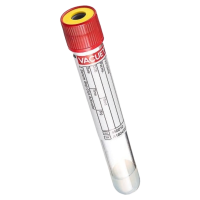
Test Code: 94462
CPT Code(s): 86003 (x9)
Includes: IgE allergy testing for: Macadamia Nut (RF345), Pecan Nut (F201), Brazil Nut (F18), Walnut (F256), Cashew Nut (F202), Pistachio (F203), Hazelnut (F17), Almond (F20), Peanut (F13)
Methodology: Immunoassay
Clinical Significance: This procedure is based on a fluorescent enzyme immunoassay (FEIA) technique. The allergen of interest, covalently couple to an Immunocap, reacts with the specific IgE in the patient serum. After washing away non-specific IgE, enzyme labeled antibodies against IgE are added to form a complex. After incubation, unbound enzyme anti-IgE is washed away and the bound complex is then incubated with a developing agent stopping the reaction, the fluorescence of the eluate is measured. The higher the fluorescence value, the more specific IgE is present in the specimen. To classify test results fluorescence for patient samples are compared directly with fluorescence for the reference serum in parallel. Results are reported in both KUI/mL and % binding (alternate scoring method – ASM) with a class score.
Alternative Name(s): ImmunoCAP®; Allergy; Rast; Autocap; Nut Mix; Mixed Nut Allergen Panel
Supply: #T157 Red/Yellow SST 8mL
Preferred Specimen: Serum
Preferred Volume: mL
Transport Container: Serum Separator Tube (SST)
Transport Temperature: Room Temperature
Specimen Stability: Room Temperature: 14 Days
Rejection Criteria:
- Hemolysis
- What are hemolyzed specimens?
- Hemolysis occurs when the red cells are damaged during sample collection causing them to rupture. Hemolyzed serum or plasma is pale pink to red rather than the normal clear straw or pale-yellow color.
- What causes a specimen to be hemolyzed?
- Mixing tubes too vigorously
- Placing tubes in the refrigerator without allowing 30 minutes at room temperature for complete clotting
- Exposure to heat or in a refrigerator that is too cold
- Using a needle with too small of a bore necessary for the venipuncture
- Using too large a tube when using a butterfly needle
- Not allowing sufficient time for alcohol to dry on puncture site
- Leaving the tourniquet on for longer than one minute
- How can hemolyzed specimens be prevented?
- For routine collections, use a 20–22-gauge needle
- Do not remove the needle from the vein with the vacuum tube engaged
- Do not collect a specimen in a hematoma
- Do not centrifuge the specimen for a prolonged period of time
- Draw the sample gently and evenly
- What are hemolyzed specimens?
- Specimens exceeding stability
- Specimens other than serum
- Unlabeled or improperly labeled specimens
For additional supply or collection device information, please contact DLO's Customer Service at (800) 891-2917, option 2.
The CPT codes provided are based on AMA guidelines and are for informational purposes only. CPT coding is the sole responsibility of the billing party. Please direct any questions regarding coding to the Payor being billed.
